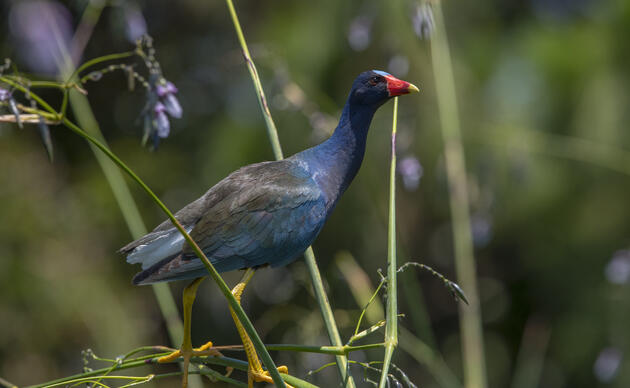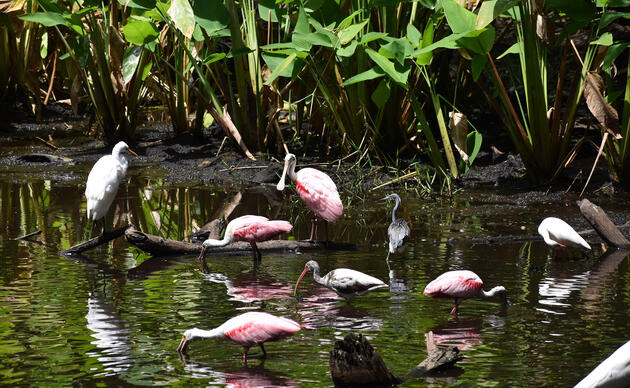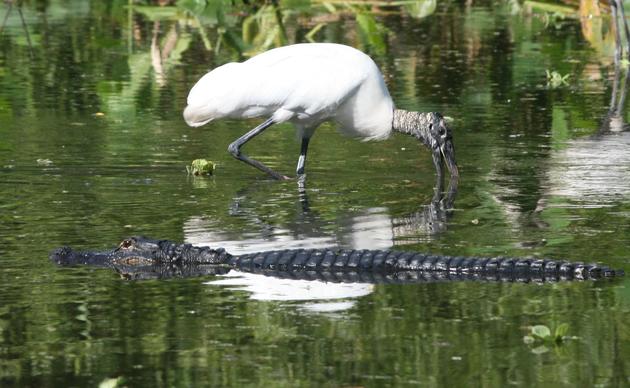On February 4, 2025, Audubon staff conducted the second Wood Stork monitoring flight of the nesting season. Following a similar flight path as in January, the research team surveyed two active colonies that showed an increase in Wood Stork nesting since last month, but the historic Corkscrew colony remains inactive.
At BC-29 (north of the Florida Panther National Wildlife Refuge), numerous Wood Stork nesting pairs were observed, along with an increase in Roseate Spoonbills.
On Lenore Island in the Caloosahatchee River, more Wood Stork nests were observed compared to January. Great Blue Herons, Roseate Spoonbills, Great Egrets, and Anhingas were all seen nesting on the island.
At the historic Corkscrew colony, no Wood Storks or active Wood Stork nests were spotted. As the nesting season progresses and water levels drop, Wood Storks that begin nesting later in the spring will face mounting challenges in successfully fledging chicks before the rainy season arrives.
At the Picayune Strand State Forest, where Everglades Restoration is nearly complete, the team saw no signs of wading bird nesting however, foraging White Ibis were noted along the Prairie Canal to the east. While habitat restoration like the Picayune Strand project is vital for supporting wading birds and other wildlife and offers hope for species like Wood Storks, scientists continue to see declines in numbers across its historic Everglades range.




